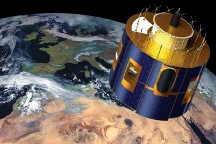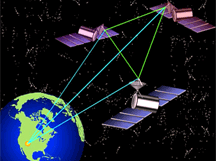Wednesday 27 February, 2013, 08:20 - Amateur Radio, Spectrum Management, Satellites
Posted by Administrator
Over in Brussels, the European Commission, through the direction given to it by the Radio Spectrum Policy Programme (RSPP), is trying to identify 1200 MHz of spectrum that can be made available for 'wireless broadband' services. At present there is 1025 MHz of spectrum available for such services including:Posted by Administrator
| Band | Allocation | Total Spectrum |
|---|---|---|
| Digital Dividend | 791 – 821 // 832 – 862 MHz | 60 MHz |
| 900 MHz | 880 – 915 // 925 – 960 MHz | 70 MHz |
| 1800 MHz | 1710 – 1785 // 1805 – 1880 MHz | 150 MHz |
| 2.1 GHz (FDD) | 1920 – 1980 // 2110 – 2170 MHz | 120 MHz |
| 2.1 GHz (TDD) | 1900 – 1920 MHz 2010 – 2025 MHz |
35 MHz |
| 2.6 GHz (FDD) | 2500 – 2570 // 2620 – 2690 MHz | 140 MHz |
| 2.6 GHz (TDD) | 2570 – 2620 MHz | 50 MHz |
| 3.6 GHz | 3400 – 3800 MHz | 400 MHz |
| Total | 1025 MHz | |
Finding another 175 MHz to make the goal of 1200 MHz is therefore surely not such a big ask. However, there are issues with the spectrum that is currently available. The 3400 – 3800 MHz band accounts for 400 MHz or a good third of it and despite already being allocated to broadband wireless in Europe, it has not been very popular. The slow take-up is partly due to a lack of mass market products for the band and the poorer propagation at these higher frequencies, but is also due to the need to protect certain C-Band satellite downlinks which remain in the band. This also forms the 9cm amateur band. It therefore seems sensible that if new spectrum is to be found, it ought to be below 3 GHz in order that it will prove popular enough to actually be put into use.
 To try and identify 'underused' spectrum, the European Commission is conducting a spectrum inventory whose purpose is to firstly examine the availability and use of spectrum and then to consider the future needs to try and match supply with demand. The first part of this inventory, a study which examined the extent to which each spectrum band is used was published in late 2012. The initial findings of the consultants who undertook the study were that the bands with the lowest current usage and thus which might be candidates for re-allocation were:
To try and identify 'underused' spectrum, the European Commission is conducting a spectrum inventory whose purpose is to firstly examine the availability and use of spectrum and then to consider the future needs to try and match supply with demand. The first part of this inventory, a study which examined the extent to which each spectrum band is used was published in late 2012. The initial findings of the consultants who undertook the study were that the bands with the lowest current usage and thus which might be candidates for re-allocation were:- 1452 – 1492 MHz. This band is set aside for DAB radio services, however it has remained virtually unused. The ECC have now recommended the re-allocation of this band for mobile services after pressure from Ericsson and Qualcomm to do so. This is therefore a 'no brainer' or a 'done deal'.
- 1980 – 2010 // 2170 – 2200 MHz. This band is currently allocated for 3G mobile satellite services to complement terrestrial 3G services. One satellite (Eutelsat 10A) was launched with a payload that is active in this band, but it failed to deploy the dish correctly and as such the band remains largely (though not completely) unused. It would seem churlish to take this away though, when there is still scope for it to be commercialised for its intended purpose. Perhaps some form of sharing using a complimentary ground component could be envisaged.
- 3400 – 3800 MHz. This was identified as being underused… 'Quelle surprise' as they say in Brussels!
- 3800 – 4200 MHz. This is also part of the C-Band satellite downlink frequency range but has also been used for fixed links in some countries. Fixed links can be carefully controlled so as to avoid interference to satellite ground stations: it is unclear how a more widespread roll-out of services in this band would be feasible. This also fails the 'below 3 GHz' test.
- 5030 – 5150 MHz. This band is allocated for aeronautical use and was intended to be used for a new microwave landing system (MLS) to replace existing landing systems and for aeronautical mobile satellite services (AMSS). Very few airports or airlines have adopted MLS (London Heathrow and British Airways being two of the few who have done so) and no AMSS services in the band have been launched. If 3.5 GHz is not popular though, it seems unlikely that 5 GHz will be any more welcome.
- 5725 – 5875 MHz. This is a band which is available on either a licence exempt or a lightly licensed basis in most European countries for use with WiFi (802.11a) and other low power services. Being well over 3 GHz it is unlikely to be popular. It also forms a large chunk of the 6cm amateur band.
One option on the table, though not identified through the inventory, is the frequency band 2300 – 2400 MHz. It was identified at the 2007 World Radio Conference as a candidate for IMT (the ITU code for wireless broadband). It is already in the 3GPP standards for LTE, where it is known as the mysterious 'Band 40'. The ECC has considered the use of this band for wireless broadband services and concluded that it is quite possible. Sweden and Australia have already handed all of the band over to wireless broadband use, and many other countries (especially in Asia) have licensed part of it. One of the big problems with this band in Europe is that it is heavily used by governmental (read 'defence') services who are already smarting from the loss of many other bands over the past years and are in no mood for another re-farming exercise to release this band. Oh, and it represents the vast portion (and the most useful bit) of the 13cm amateur band.
 Meanwhile, over in the USA, the FCC has also recently assessed the possibility of reallocating some the frequency band 1675 -1710 MHz for wireless broadband uses. This band is currently used for the downlink for meteorological satellite services, however few satellites venture above 1695 MHz (with the possible exception of a couple of NOAA satellites, the Chinese Feng Yun satellites and the polar orbiting METOP) and there is almost nothing above 1700 MHz, unless you count satellites yet to be launched (such as GOES-R).
Meanwhile, over in the USA, the FCC has also recently assessed the possibility of reallocating some the frequency band 1675 -1710 MHz for wireless broadband uses. This band is currently used for the downlink for meteorological satellite services, however few satellites venture above 1695 MHz (with the possible exception of a couple of NOAA satellites, the Chinese Feng Yun satellites and the polar orbiting METOP) and there is almost nothing above 1700 MHz, unless you count satellites yet to be launched (such as GOES-R).Given the location of this spectrum, directly adjacent to the existing 1800 MHz band, and given that the associated pairing is also largely unused it might easily be possible to, say, extend the 1800 MHz band by 2 x 10 to become 1700 – 1785 // 1795 – 1880 MHz. Keeping the spacing between the up and downlinks would simplify the adoption of the new spectrum (in the same way that GSM became E-GSM). The 10 MHz gap in the middle is rather small which can cause handset manufacturers problems, but there are ways this could be dealt with. The loser here (other than some yet-to-be-launched satellites who could surely locate their downlink in the remaining part of the band) are radiomicrophones who are allocated 1785 – 1800 MHz. A screaming case of 'use it or lose it' if they are to retain this allocation.
And whilst we're pairing up things, how's about extending the 2.1 GHz band? The lower part of the pair, 1900 – 1920 MHz, is already licensed, albeit for TDD services. The upper part of the pair, 2090 – 2110 MHz is another of those military bands that would prove difficult to squeeze. The bigger problem here is that it contains sensitive satellite uplinks that are easily interfered with. Nonetheless, there was a terrestrial wireless network licensed in the band in the UK (Zipcom), if never actually launched.
So far, we have identified the following extra spectrum:
| Band | Allocation | Total Spectrum |
|---|---|---|
| L-Band | 1452 – 1492 MHz | 40 MHz |
| Extended 1800 MHz | 1700 – 1710 // 1795 – 1805 MHz | 20 MHz |
| Extended 2.1 GHz | 1900 – 1920 // 2090 – 2110 MHz | 20 MHz (20 MHz was already available) |
| 2.1 GHz MSS sharing | 1980 – 2010 // 2170 – 2200 MHz | 60 MHz (shared with satellite) |
| 2.3 GHz | 2300 – 2400 MHz | 100 MHz |
| Total | 240 MHz | |
That makes 240 MHz of potential new sub-3 GHz spectrum without too much pain and done in a way that is largely compatible with existing mobile bands, though not with existing defence or satellite sensitivities. Given the recent auction prices for spectrum, 240 MHz across Europe is worth something in the region of 75 billion Euro. So what would it cost to release it?

- L-Band is free in every sense of the word. Except possibly in the UK where it is owned by Qualcomm but presumably as they have been lobbying for it to become available for mobile services, they would have no qualms about using it for such. Cost: peanuts.
- Extended 1800 MHz The main affected party here are some meteorological satellite downlink sites. These are few and far between and could be protected through the use of an exclusion zone. Cost: cashew nuts.
- Extended 2.1 GHz The number of military satellites using the band 2090 – 2110 MHz is difficult to ascertain (for obvious reasons). There is also a need to re-farm the band 1900 – 1920 MHz. Cost: macadamia nuts.
- 2.1 GHz MSS sharing In theory there is nothing to stop this taking place even with a satellite already launched. To be completely fair, it would only be reasonable to recompense the licensees (Solaris and Intelsat) for their investments. Cost: pistachio nuts.
- 2.3 GHz Those defence boys have big toys (and big guns) that would be costly to replace. That being said, only around 40 MHz of this band is necessary if the target is 175 MHz and not 240 MHz. Surely releasing 40 MHz can’t be that difficult no matter how big your toys. The fact that the band is destined for TDD means that it doesn’t even need to be the same 40 MHz in each country. Cost: pistachio nuts.
Alternatively, perhaps radio amateurs who stand to lose the 13cm, 9cm and 6cm bands might wish to launch a counter-bid? After all, they’re replete with nuts (in a good way)…!
add comment
( 2002 views )
| permalink
| 



 ( 3.1 / 2385 )
( 3.1 / 2385 )




 ( 3.1 / 2385 )
( 3.1 / 2385 )
Following the recent Wireless Waffle post about Wes's excellent Soldery Song, it has been noted that the terms 'C-Band' and 'Ku-Band' were thrown around casually, as if everyone understands what these mean. For the benefit of those who don't, here's a short description of what they're all about:
 It is perhaps no surprise that in the battle to gain access to Ka-Band, some of those doing the fighting are going to lose out. This seems to have happened to Australian satellite company NewSat. Recently both Morgan Stanley and Lazard have pulled out of the programme raising funds for the launch of NewSat's Jabiru 1 satellite. Digging into the economics of NewSat, it appears that the numbers just don't add up. The cost of their capacity would be around 50% higher than that of existing Ka-Band satellite operators, which might be a difficult sell when trying to raise lots of capital to build and launch a new satellite.
It is perhaps no surprise that in the battle to gain access to Ka-Band, some of those doing the fighting are going to lose out. This seems to have happened to Australian satellite company NewSat. Recently both Morgan Stanley and Lazard have pulled out of the programme raising funds for the launch of NewSat's Jabiru 1 satellite. Digging into the economics of NewSat, it appears that the numbers just don't add up. The cost of their capacity would be around 50% higher than that of existing Ka-Band satellite operators, which might be a difficult sell when trying to raise lots of capital to build and launch a new satellite.
 From the figures on their web-site, NewSat were going to pay Lockheed Martin US$550 million to build and launch their 'bird'. The resulting satellite would operate in a total of around 8.4 GHz of Ka-Band spectrum. Compare that to UK satellite company Avanti who paid US$400 million for their bird, but which accesses 11 GHz worth of Ka-Band spectrum. Do the maths and you see that NewSat would be paying approximately US$66 million to access each GHz of spectrum, whereas Avanti paid only US$36 million. This difference in cost is borne out in prices too, with NewSat claiming to be aiming to charge customers US$1.3 million for a transponder for 12 months. The equivalent price for Avanti is around US$0.9 million.
From the figures on their web-site, NewSat were going to pay Lockheed Martin US$550 million to build and launch their 'bird'. The resulting satellite would operate in a total of around 8.4 GHz of Ka-Band spectrum. Compare that to UK satellite company Avanti who paid US$400 million for their bird, but which accesses 11 GHz worth of Ka-Band spectrum. Do the maths and you see that NewSat would be paying approximately US$66 million to access each GHz of spectrum, whereas Avanti paid only US$36 million. This difference in cost is borne out in prices too, with NewSat claiming to be aiming to charge customers US$1.3 million for a transponder for 12 months. The equivalent price for Avanti is around US$0.9 million.
This may not yet be a Ka-tastrophe (groan) or even a Ka-lamity (double groan) for NewSat. NewSat suspended trading in its shares in November to give it time to re-think it's financing strategy. Maybe there is still a 'hope in heaven' for those communities that NewSat was intending to serve, if, of course, the other satellite operators don't get there first!
- C-Band (in satellite terms) refers to frequencies in the range of roughly 4 to 8 GHz. C-Band satellites are commonplace in areas where there is very heavy rainfall (eg tropical areas) as, using relatively low microwave frequencies, signals propagate better and suffer fewer rain fades. It's not the total amount of rain that matters, it's the voracity of the downpours.
- Ku-Band refers to frequencies roughly in the range of 10 to 15 GHz (the 'roughly' refering to the fact that uplinks and downlinks work in different bands that may or may not be within this range but are at least somewhere nearby). Ku-Band is the band most commonly used for digital satellite television broadcasting anywhere that it doesn't rain too heavily (eg most non-tropical areas). In many areas, the geostationary arc is near saturation in Ku-Band, with satellites positioned every 2 degrees or so. Some satellite operators have tried to launch broadband internet services in this band but the high levels of congestion make it difficult to find the space to do so.
- Ka-Band refers to frequencies roughly in the range of 20 to 30 GHz. Ka-Band is the relative newcomer on the block (though Italsat F1 conducted some tests in this band in the early 1990s). With Ku-Band becoming congested with broadcasting, satellite operators wishing to offer broadband services are increasingly turning to Ka-Band to do so and it is fast becoming the most hotly contested band for new satellite services. Already popular in the US, it is now being successfully commercialised in Europe and Africa. In emerging countries, where terrestrial (including wireless) broadband services are unlikely to be rolled-out any time soon, the use of Ka-Band satellite broadband is likely to open up Internet access to millions of people who wouldn't otherwise have a hope of getting a decent connection.
 It is perhaps no surprise that in the battle to gain access to Ka-Band, some of those doing the fighting are going to lose out. This seems to have happened to Australian satellite company NewSat. Recently both Morgan Stanley and Lazard have pulled out of the programme raising funds for the launch of NewSat's Jabiru 1 satellite. Digging into the economics of NewSat, it appears that the numbers just don't add up. The cost of their capacity would be around 50% higher than that of existing Ka-Band satellite operators, which might be a difficult sell when trying to raise lots of capital to build and launch a new satellite.
It is perhaps no surprise that in the battle to gain access to Ka-Band, some of those doing the fighting are going to lose out. This seems to have happened to Australian satellite company NewSat. Recently both Morgan Stanley and Lazard have pulled out of the programme raising funds for the launch of NewSat's Jabiru 1 satellite. Digging into the economics of NewSat, it appears that the numbers just don't add up. The cost of their capacity would be around 50% higher than that of existing Ka-Band satellite operators, which might be a difficult sell when trying to raise lots of capital to build and launch a new satellite. From the figures on their web-site, NewSat were going to pay Lockheed Martin US$550 million to build and launch their 'bird'. The resulting satellite would operate in a total of around 8.4 GHz of Ka-Band spectrum. Compare that to UK satellite company Avanti who paid US$400 million for their bird, but which accesses 11 GHz worth of Ka-Band spectrum. Do the maths and you see that NewSat would be paying approximately US$66 million to access each GHz of spectrum, whereas Avanti paid only US$36 million. This difference in cost is borne out in prices too, with NewSat claiming to be aiming to charge customers US$1.3 million for a transponder for 12 months. The equivalent price for Avanti is around US$0.9 million.
From the figures on their web-site, NewSat were going to pay Lockheed Martin US$550 million to build and launch their 'bird'. The resulting satellite would operate in a total of around 8.4 GHz of Ka-Band spectrum. Compare that to UK satellite company Avanti who paid US$400 million for their bird, but which accesses 11 GHz worth of Ka-Band spectrum. Do the maths and you see that NewSat would be paying approximately US$66 million to access each GHz of spectrum, whereas Avanti paid only US$36 million. This difference in cost is borne out in prices too, with NewSat claiming to be aiming to charge customers US$1.3 million for a transponder for 12 months. The equivalent price for Avanti is around US$0.9 million.This may not yet be a Ka-tastrophe (groan) or even a Ka-lamity (double groan) for NewSat. NewSat suspended trading in its shares in November to give it time to re-think it's financing strategy. Maybe there is still a 'hope in heaven' for those communities that NewSat was intending to serve, if, of course, the other satellite operators don't get there first!
Sunday 23 December, 2012, 23:02 - Radio Randomness, Satellites, Much Ado About Nothing
Posted by Administrator
It seems there are very few songs which touch on the topic of satellite communications unless you count:Posted by Administrator
- Sleeping Satellite by Tasmin Archer;
- Satellite by Lena (Germany's Eurovision winner in 2010); and
- Satellite by Oceanlab.
I'm just talking to a satellite,
Twenty thousand miles up in the sky each night
Taken from Electric Light Orchestra's Calling America.
There’s also:
I saw two shooting stars last night,
I wished on them but they were only satellites,
It's wrong to wish on space hardware.
I wish, I wish, I wish you'd care.
Taken from Kirsty Macoll's New England.
So it was nice to be alerted to a piece of work which is not only about satellites, but is very specifically endorsing the use of C-Band satellite services (3400 – 4200 MHz) over and above the use of Ku-Band (10700 – 12500 MHz) in sub-Saharan Africa where C-Band reception is more reliable than Ku-Band due to the fact that it deals with rain fading much better than Ku-Band does.
The song is by Cameroonian artist Wes. In it, he laments the loss of his Ku-band equipment, and the main thrust of the song is that he is short of some solder with which to complete the installation of his new C-Band parts. The video has him stood in front of his non-functional C-Band dish whilst his team try to dance their way into fixing the problem. Eventually they set off on a trek to try and get him some solder as the dancing, no matter how energetic, is clearly not working.
The only odd thing is that there is an Asian lady who, all the way through the song, keeps going on about her blasted spade. Still, it all adds to the ambiance.
The song is called ‘Soldery Song’, and you will need to watch the video whilst at the same time reading the lyrics below as it is quite hard to follow what he is saying due to his strong African English accent (the spade lady's incessant moaning about her spade is shown in brackets)...
SOLDERY SONG – WES
Soldery Song – Wes by jibou
(My Spade, where’s my spade?)
Soldery song: me need a solder
Me got me some parts, now it's me too,
Old part me chuck, and new me part, yeh?
Soldery song: me need me a soldery solder
Me got me some parts, now it's me too,
Old part me chuck, and me new part, yeh?
I throw a my Ku away, melt some solder, done my way
I throw a my Ku away, melt some solder, done my way
Bring us C-band way (with a spade?)
One-a-where they can go?
Hey, I meant to check.
(Spade, yeh, yeh, yeh, yeh!) x 2
Soldery song: hoo hoo hoo hoo hoo, me need a solder
Me got me some parts, now it's me too,
Old part me chuck and new me part, yeh?
I throw a my Ku away, melt some solder, done my way
I throw a my Ku away, melt some solder, done my way
Bring us C-band way (with a spade?)
One-a-where they can go?
Hey, I meant to check.
(Spade, yeh, yeh, yeh, yeh!) x 2
No more can I Ku, new me parts C-band
No more can I Ku, new me parts knackered!
No more can I Ku, new me parts C-band
No more can I Ku, new me parts knackered!
No more can I Ku, new me parts C-band
No more can I Ku, new me parts knackered!
I throw a my Ku away, melt some solder, done my way x 4
Bring us C-band way (with a spade?)
One-a-where they can go?
(Spade, yeh, yeh, yeh, yeh!)
Bring us C-band way (with a spade?)
One-a-where they can go?
Hey, I meant to check.
No more can I Ku, new me parts C-band
No more can I Ku, new me parts knackered!
No more can I Ku, new me parts C-band
No more can I Ku...
(Spade, yeh, yeh, yeh, yeh!)
Perhaps some kind Wireless Waffle reader could purchase some solder and send it to Wes to get his C-band equipment up and working. Oh, and whilst you’re at it, give the poor lady a spade too.
According to an article in last Friday's London Evening Standard, the term 'pinging' means locating a mobile phone by satellite. Now Wireless Waffle has previously explained that GPS satellites can not track your location due to the fact that they only transmit location information, not receive it. So how did the News of the World manage to 'ping' the location of a mobile phone using satellite?
 As it couldn't have been GPS, the most obvious solution is that the satellites used to deliver Sky television are not just 'Sky satellites' but 'spy satellites' too! For this to work, the satellites concerned would have to be able to receive a signal from the phone being tracked, identify the direction from which the signal was being received, and then triangulate this through measurements from a number of different locations.
As it couldn't have been GPS, the most obvious solution is that the satellites used to deliver Sky television are not just 'Sky satellites' but 'spy satellites' too! For this to work, the satellites concerned would have to be able to receive a signal from the phone being tracked, identify the direction from which the signal was being received, and then triangulate this through measurements from a number of different locations.
 Let's take these one at a time. A geostationary satellite can 'see' about a third of the surface area of the earth. The image on the right shows the view from a satellite sat directly above the Greenwich Meridian. This puts it in clear line-of-sight of at least a third of the Earth's population (and probably more given that the pacific area is largely empty). So could it 'see' a mobile phone in the UK, yes! However, it would also see around a billion other mobile phones. Even if it had a very sharp 'spot beam' focussed solely on the UK (and remember that some celebrities may not be in the UK when pinged) it would still see probably a hundred million phones. Identifying the particular one being used by a certain individual is therefore not at all straightforward. Modern digital signal processing might be able to help a little, but with millions of mobile phones all transmitting at the same time, right across the country, it would take an awful lot of processing to pinpoint just one phone.
Let's take these one at a time. A geostationary satellite can 'see' about a third of the surface area of the earth. The image on the right shows the view from a satellite sat directly above the Greenwich Meridian. This puts it in clear line-of-sight of at least a third of the Earth's population (and probably more given that the pacific area is largely empty). So could it 'see' a mobile phone in the UK, yes! However, it would also see around a billion other mobile phones. Even if it had a very sharp 'spot beam' focussed solely on the UK (and remember that some celebrities may not be in the UK when pinged) it would still see probably a hundred million phones. Identifying the particular one being used by a certain individual is therefore not at all straightforward. Modern digital signal processing might be able to help a little, but with millions of mobile phones all transmitting at the same time, right across the country, it would take an awful lot of processing to pinpoint just one phone.
Let's assume (for the sake of argument) that such processing could be fitted to a satellite and that it was possible to pick out one phone from amongst millions. The next job is to identify the direction of the signal from that phone. In order to do this to an accuracy of, say 1km, from geostationary orbit, requires an angular accuracy of about 0.01 degrees. To get this level of focus requires an antenna array that is approximately 1km across, nearly 100 times the maximum size of antennas fitted to current communication satellites.
 So assuming state-of-the-art digital signal processing, and satellites that are 100 times the size of those typically in use, all that remains is to triangulate the location of the transmitter. Typically three measurements are required in order to triangulate the location of an object. All the UK Sky TV satellites are in the same orbital position, but this would not give the level of diversity required and so satellites in other positions would need to be used in addition to the fleet used for the UK services. But as there are Sky TV services for other countries on other satellites in diverse orbital positions, these could be used. This bit, at least, is vaguely feasible.
So assuming state-of-the-art digital signal processing, and satellites that are 100 times the size of those typically in use, all that remains is to triangulate the location of the transmitter. Typically three measurements are required in order to triangulate the location of an object. All the UK Sky TV satellites are in the same orbital position, but this would not give the level of diversity required and so satellites in other positions would need to be used in addition to the fleet used for the UK services. But as there are Sky TV services for other countries on other satellites in diverse orbital positions, these could be used. This bit, at least, is vaguely feasible.
So with a fleet of gigantic, super-powerful, mega-satellites, it might just be possible to identify the location of a mobile phone from space. It is more likely, however, that the idea that 'pinging' a phone to locate it by satellite is pure hogwash, and is an idea espoused by the press to scare celebrities and others (like you and me) into thinking that they can be tracked down when up to no good!

 As it couldn't have been GPS, the most obvious solution is that the satellites used to deliver Sky television are not just 'Sky satellites' but 'spy satellites' too! For this to work, the satellites concerned would have to be able to receive a signal from the phone being tracked, identify the direction from which the signal was being received, and then triangulate this through measurements from a number of different locations.
As it couldn't have been GPS, the most obvious solution is that the satellites used to deliver Sky television are not just 'Sky satellites' but 'spy satellites' too! For this to work, the satellites concerned would have to be able to receive a signal from the phone being tracked, identify the direction from which the signal was being received, and then triangulate this through measurements from a number of different locations.  Let's take these one at a time. A geostationary satellite can 'see' about a third of the surface area of the earth. The image on the right shows the view from a satellite sat directly above the Greenwich Meridian. This puts it in clear line-of-sight of at least a third of the Earth's population (and probably more given that the pacific area is largely empty). So could it 'see' a mobile phone in the UK, yes! However, it would also see around a billion other mobile phones. Even if it had a very sharp 'spot beam' focussed solely on the UK (and remember that some celebrities may not be in the UK when pinged) it would still see probably a hundred million phones. Identifying the particular one being used by a certain individual is therefore not at all straightforward. Modern digital signal processing might be able to help a little, but with millions of mobile phones all transmitting at the same time, right across the country, it would take an awful lot of processing to pinpoint just one phone.
Let's take these one at a time. A geostationary satellite can 'see' about a third of the surface area of the earth. The image on the right shows the view from a satellite sat directly above the Greenwich Meridian. This puts it in clear line-of-sight of at least a third of the Earth's population (and probably more given that the pacific area is largely empty). So could it 'see' a mobile phone in the UK, yes! However, it would also see around a billion other mobile phones. Even if it had a very sharp 'spot beam' focussed solely on the UK (and remember that some celebrities may not be in the UK when pinged) it would still see probably a hundred million phones. Identifying the particular one being used by a certain individual is therefore not at all straightforward. Modern digital signal processing might be able to help a little, but with millions of mobile phones all transmitting at the same time, right across the country, it would take an awful lot of processing to pinpoint just one phone.Let's assume (for the sake of argument) that such processing could be fitted to a satellite and that it was possible to pick out one phone from amongst millions. The next job is to identify the direction of the signal from that phone. In order to do this to an accuracy of, say 1km, from geostationary orbit, requires an angular accuracy of about 0.01 degrees. To get this level of focus requires an antenna array that is approximately 1km across, nearly 100 times the maximum size of antennas fitted to current communication satellites.
 So assuming state-of-the-art digital signal processing, and satellites that are 100 times the size of those typically in use, all that remains is to triangulate the location of the transmitter. Typically three measurements are required in order to triangulate the location of an object. All the UK Sky TV satellites are in the same orbital position, but this would not give the level of diversity required and so satellites in other positions would need to be used in addition to the fleet used for the UK services. But as there are Sky TV services for other countries on other satellites in diverse orbital positions, these could be used. This bit, at least, is vaguely feasible.
So assuming state-of-the-art digital signal processing, and satellites that are 100 times the size of those typically in use, all that remains is to triangulate the location of the transmitter. Typically three measurements are required in order to triangulate the location of an object. All the UK Sky TV satellites are in the same orbital position, but this would not give the level of diversity required and so satellites in other positions would need to be used in addition to the fleet used for the UK services. But as there are Sky TV services for other countries on other satellites in diverse orbital positions, these could be used. This bit, at least, is vaguely feasible.So with a fleet of gigantic, super-powerful, mega-satellites, it might just be possible to identify the location of a mobile phone from space. It is more likely, however, that the idea that 'pinging' a phone to locate it by satellite is pure hogwash, and is an idea espoused by the press to scare celebrities and others (like you and me) into thinking that they can be tracked down when up to no good!



